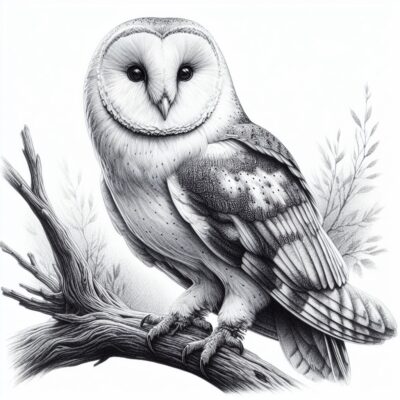Barn owls (Tyto alba) are captivating creatures that belong to the family Tytonidae. With their distinctive heart-shaped facial disc and pale plumage, these nocturnal birds of prey are widely distributed across the globe, inhabiting a variety of environments from grasslands to deserts. Their unique characteristics, behaviour, and ecological importance make them fascinating subjects for study and admiration.
As nocturnal hunters, barn owls are most active during the night. Their excellent low-light vision, combined with acute hearing, enables them to hunt in complete darkness. The primary diet of barn owls consists of small mammals, including rodents such as mice and voles. They use their sharp talons and powerful beaks to capture and consume prey. The regurgitated pellets found near their roosting sites often contain the indigestible parts of their meals, providing valuable insights into their diet and the local ecosystem.
Barn owls exhibit remarkable adaptability and can be found on nearly every continent, excluding Antarctica. They thrive in a diverse range of environments, including farmlands, grasslands, marshes, deserts, and forests. These birds are highly adaptable, often nesting in man-made structures like barns, church steeples, or abandoned buildings. Despite their name, barn owls are not exclusively found in barns, but these structures provide convenient roosting and nesting sites.
One of the defining features of barn owls is their heart-shaped facial disc, which aids in directing sound towards their keenly sensitive ears. This exceptional hearing allows them to locate prey in complete darkness with remarkable accuracy. Their plumage is typically a mix of tan, gray, and white, providing effective camouflage in various habitats. With a wingspan ranging from 32 to 42 inches, barn owls are well-adapted for silent flight, thanks to specialized feathers that minimize noise as it flies and hunts.
Barn owls are known for their monogamous relationships, forming long-term bonds with their mates. The courtship displays involve aerial acrobatics, mutual preening, and vocalizations. Nests are often established in elevated locations, and both partners contribute to building and maintaining them. The female typically lays a clutch of 4 to 7 eggs, and the incubation period lasts around 30 days. After hatching, the chicks are cared for by both parents until they fledge, marking the beginning of their independent lives.
While barn owls are generally elusive and avoid human contact, their presence in agricultural areas can be beneficial to farmers. By naturally controlling rodent populations, these birds provide a valuable form of pest control. Efforts to encourage cohabitation with barn owls, such as installing nest boxes in suitable locations, showcase the potential for harmonious relationships between wildlife and human activities.
